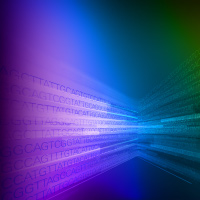The advent of organoids in disease modeling and drug discovery
Some developmental and disease processes are difficult to study in animal models, patients, immortalized cell lines, or cultures of human tissue explants. The development of human organoids—complex, 3D systems generated in vitro from human stem cells—enables the study of human-specific biological processes. Organoids derived from induced pluripotent stem cells (iPSCs) opened new avenues for organ-level disease modeling. With the capability of mass production, organoid techniques are also useful for screening libraries of chemical compounds for drug discovery. However, there is a need to optimize cell culture conditions to optimally drive stem cell proliferation and differentiation into organoids.
In one proof-of-concept study, organoids derived from patients with retinitis pigmentosa (RP) were genetically corrected using CRISPR-Cas9.1 Healthy organoids generated this way might be transplanted back into patients for personalized regenerative medicine.
Challenges and recent advances in retinal modeling
The retina is composed of several layers that transduce light into neuronal signals via a series of biochemical reactions. Methodological advances have made it possible to induce human iPSC to recreate key retina structures and functional features in vitro.2 These simplified versions of retinas can empower developmental research, disease modeling, and testing therapies for retinal diseases such as age-related macular degeneration (AMD) and RP.
Limitations of organoid technology include the requirement for refining culture medium for long-term expansion.3 Retinal organoid reproducibility can also be a limitation; differentiation protocols must also be further optimized along with tools to specifically investigate retinal organoid quality for applications.4 One way of evaluating the quality of retinal organoids is using antibodies against markers of particular cell types. Examples include anti-arrestin 3 for cones, anti-rhodopsin for rods, anti-NRL for nucleus of rods, anti-TRPM1 for rod bipolar cells—post-synapse, anti-OneCut2 for horizontal cell nuclei, and anti-Sox9 for Müller glia.
In this work, retinal organoids were differentiated from iPSCs cultured in Cellartis® DEF-CS™ 500 Culture System following a previously published protocol,5 then evaluated using staining and imaging.








